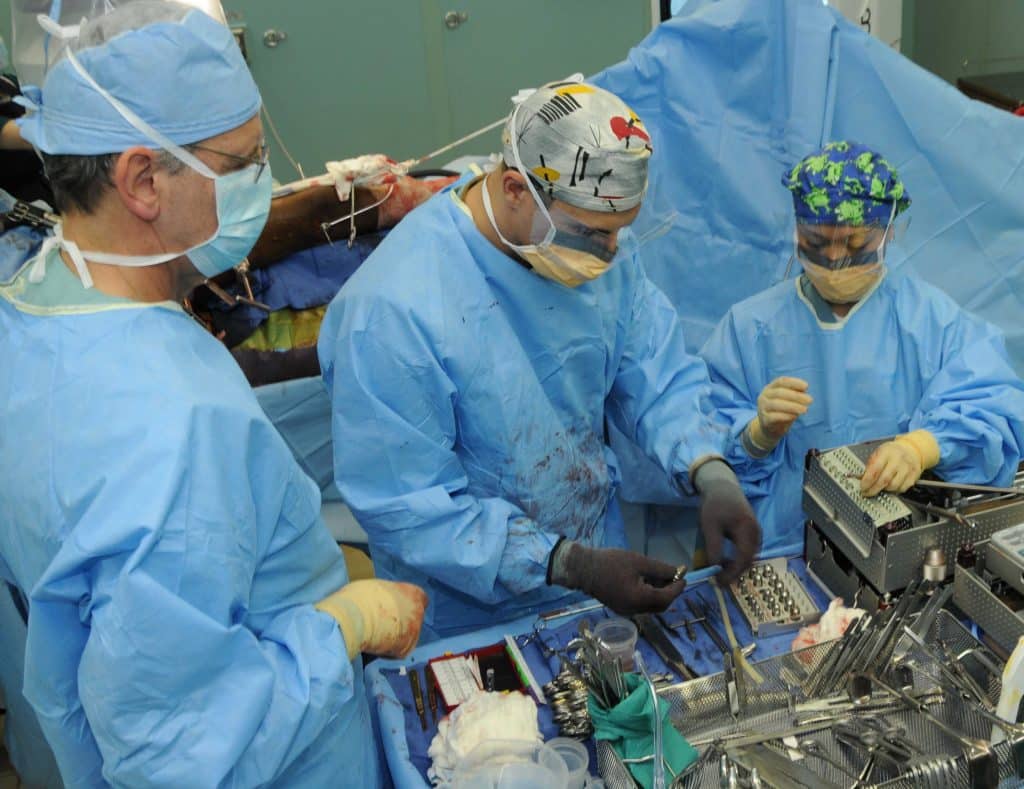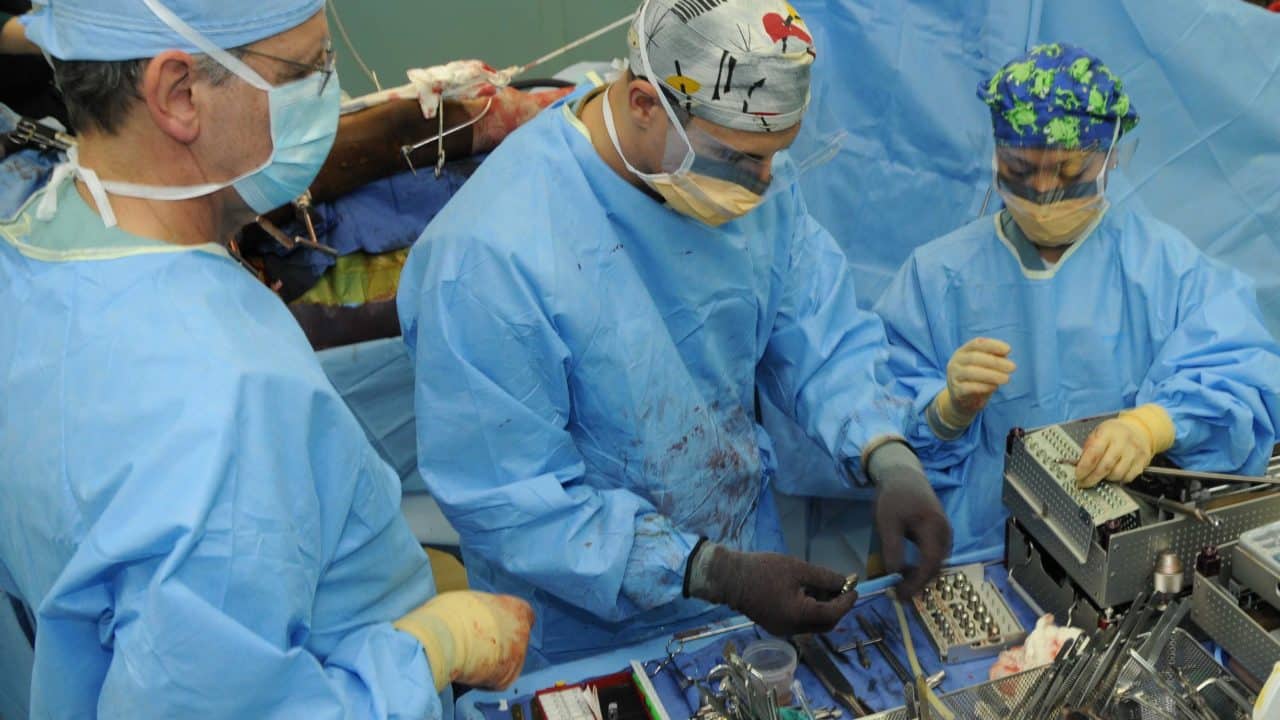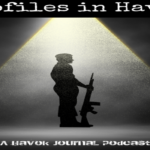There are 28 bones in a person’s foot and ankle. When my right leg was crushed by a forklift back in 2009, I broke all of them. That’s what my orthopedic surgeon told me. Some of the bones had hairline fractures and some were shattered. None of them were intact.
The surgeon spent 2 and 1/2 hours rebuilding my foot and ankle. He put together a three-dimensional jigsaw puzzle. By the end of the operation, I had a fully reconstructed limb containing nine titanium screws and a plate. Eventually, three of the screws were removed, but I still have plenty of hardware in my right leg. I also have several wicked-looking scars as reminders of my surgery.
I stayed in the hospital the night after the operation. The doctor was concerned about the possibility of blood clots. After all that slicing and dicing, there were a number of places where the clots could form. They gave me a strong pain medication shortly after I woke up from the anesthesia, but it didn’t last very long. I don’t remember much pain after I was run over by the forklift, but I distinctly remember the pain after the surgery. That hurt. Really hurt.
The surgeon prescribed me OxyContin when I went home from the hospital. That was back in the day before the addiction hazards of opioids were well known, and doctors were still handing out pills like they were Skittles. I had a big ol’ jar of those pills from the pharmacy. I’m glad that threw most of them away.
I didn’t like OxyContin. For one thing, it didn’t really take away the pain. It just made me not give a fuck about it. It also gave me auditory hallucinations. My wife, Karin, would leave me alone in the house when she went shopping, and I could still hear voices coming from the other rooms. In my youth, I probably would have paid good money for that kind of experience, but at age 50, I wasn’t loving it.
The drug also caused constipation. I didn’t like that either. There is a phrase sometimes used about “shitting a brick.” When, after days, I finally had a bowel movement, it felt like I was being split in half when I was on the toilet.
I like to drink beer. I noticed on the label of the jar that it was not a good idea to drink while using Oxycontin. I remember that there was printed in bold type: “Do NOT consume alcohol while using this medication”. Don’t even think about it. The message told me to get off this stuff ASAP. I did.
Having never before in my life broken a bone, the recovery process was a completely new experience. I had to learn how to use crutches. I couldn’t drive. I couldn’t work. I needed to lie in bed with my foot elevated for quite a while. There were lots of changes.

The biggest change was the unpleasant realization that I was totally dependent on other people to do things for me. My wife had to take care of me, and I sometimes rebelled against that. I tend to think of myself as being independent and self-sufficient. I wasn’t so self-sufficient when I was laid up, and I probably have never really been as independent as I pretend to be. I had an epiphany in that I was suddenly aware of how much I needed other folks, and how much they needed me. There was reluctant acceptance of their help on my part, and a strange feeling of humility. I learned a lot during my recuperation.
I went to see the surgeon about a week after the operation. He removed the temporary cast and looked at his handiwork. I looked too. He smiled and said, “Those stitches look really good. That’s healing nicely.”
Apparently, he saw things that I did not. When I looked at my lower leg, all I saw was a Franken-foot. Two of the toenails were jet black, and the rest of the foot was hideously swollen. The stitches alarmed me a bit. They looked nasty to me. The foot was covered with bruises in colors not found in nature. The surgeon looked at my extremity through the eyes of a craftsman. I saw it through the eyes of a distressed owner.
I went through a couple of different casts during my convalescence. They came in a rainbow of colors. The first cast was black like my mood. When I got the second cast, I was feeling confident in my masculinity, so I asked for one that was hot pink. People noticed.
Shortly after I went home from the hospital, I had a visit from a visiting nurse. He was a bright young man who came to me in order to inject me with a blood thinner. Once again, blood clots were a concern. I was lying in bed when he gave me the blood thinner. After he stuck me, he asked me a question: “Do want me to come here twice a day to give you your shots, or would you rather do it yourself?”
“How hard is it to do?”
He replied, “It’s easy. I’m a diabetic, and I’ve been giving myself insulin for years. You just grab a handful of belly fat and stick in the needle. Your wife could do it for you.”
I looked at Karin. She shook her head and left the room.
I told the nurse to teach me how to do it, and that I would handle it on my own. He told me how to dispose of the used sharps. He gave me a box of injectors. Then every day, twice a day, I would lie down, grab some flab, close my eyes, and push the plunger. I learned yet another new skill.
Recovering from an injury can be boring. I hate watching TV. Instead, I did a lot of reading while I was laid up, and I wrote quite a bit (like I am doing now). I also took out my bass guitar and invented lame riffs for hours on end. As I became more adept with my crutches, I started doing things around the house. I washed dishes and vacuumed the living room, that sort of thing.
I never got up the nerve to attempt to go down the basement steps on the crutches. I kept imagining losing my balance and doing a lip stand on the concrete floor. Instead, if I needed to go downstairs, I scooted down the steps on my ass. Then I would crawl back up again. It just seemed safer.
Eventually, I was got released to go back to my job. I could only do things in the office since I was not mobile enough to avoid moving equipment on the dock. I was still on crutches, and I was going back to work on third shift. I asked my wife, Karin, to buy me an eye patch and a stuffed parrot to put on my shoulder. If I was going to be on crutches, I wanted to do the Long John Silver pirate thing at work.
My fellow shift supervisor had no sense of humor. When I arrived at work, looking all swashbuckling, he found nothing to be amusing. Our office clerk thought it hilarious, but my dock buddy wouldn’t even acknowledge that there was anything unusual with my appearance. Even when I asked him, “How arrrrrrrrrrrrrrrrrrre you?”, he didn’t crack a smile.
Dick.

Once I got off of crutches, I started physical therapy. The therapist was a nice young lady who began by asking me, “What are your goals with regard to this therapy?”
I replied to her, “I need to dodge forklifts.”
She stared at me for a moment, and said, “Okay, let’s work on that.”
Mostly, she worked on loosening the scar tissue in my foot and ankle. She would spend an hour every session massaging the scar tissue to break it up. She explained that, if she didn’t do that, I would have poor flexibility.
One day, my wife came with me to therapy. The therapist introduced herself to Karin, and she explained that she massaged my foot and ankle. Karin smiled back at her and said, “That’s good. Just don’t go any higher.”
The therapist took me to a small circular track they had in the hospital. We would walk along the track and at random moments she would yell, “Pivot!”
I would turn abruptly on the bad leg, and then we would walk some more. We did it over and over and over. I practiced turning on the bad foot until she felt certain that I could avoid a speeding forklift. This process took a while. I had lost almost all of the muscle memory in the right foot and ankle. It took my body some time to remember what to do.
When I had the operation, my surgeon told me about the leg. He said, “It will never be the same, and you will feel it every day for the rest of your life.”
He was right. It isn’t the same. It never will be. It doesn’t hurt, but it feels different. I know when it’s going to rain by how my leg feels. It’s a barometer now. The foot and ankle work fine. I managed to go on a 165-mile walk with a group of peace activists in 2014. I walked ten miles a day, every day, on the dock during my shift at work. I did that until I retired seven years ago.
I am blessed. I got well.
_____________________
Frank (Francis) Pauc is a graduate of West Point, Class of 1980. He completed the Military Intelligence Basic Course at Fort Huachuca and then went to Flight School at Fort Rucker. Frank was stationed with the 3rd Armor Division in West Germany at Fliegerhorst Airfield from December 1981 to January 1985. He flew Hueys and Black Hawks and was next assigned to the 7th Infantry Division at Fort Ord, CA. He got the hell out of the Army in August 1986.
As the Voice of the Veteran Community, The Havok Journal seeks to publish a variety of perspectives on a number of sensitive subjects. Unless specifically noted otherwise, nothing we publish is an official point of view of The Havok Journal or any part of the U.S. government.
Buy Me A Coffee
The Havok Journal seeks to serve as a voice of the Veteran and First Responder communities through a focus on current affairs and articles of interest to the public in general, and the veteran community in particular. We strive to offer timely, current, and informative content, with the occasional piece focused on entertainment. We are continually expanding and striving to improve the readers’ experience.
© 2024 The Havok Journal
The Havok Journal welcomes re-posting of our original content as long as it is done in compliance with our Terms of Use.



